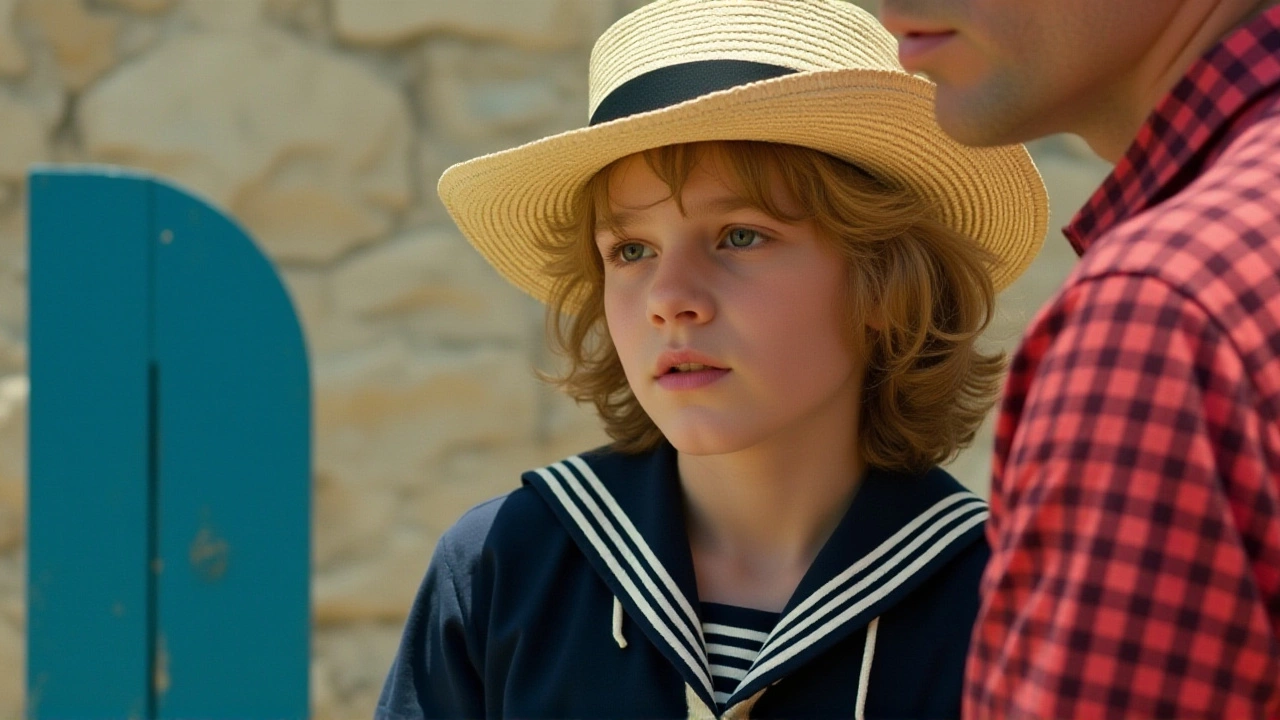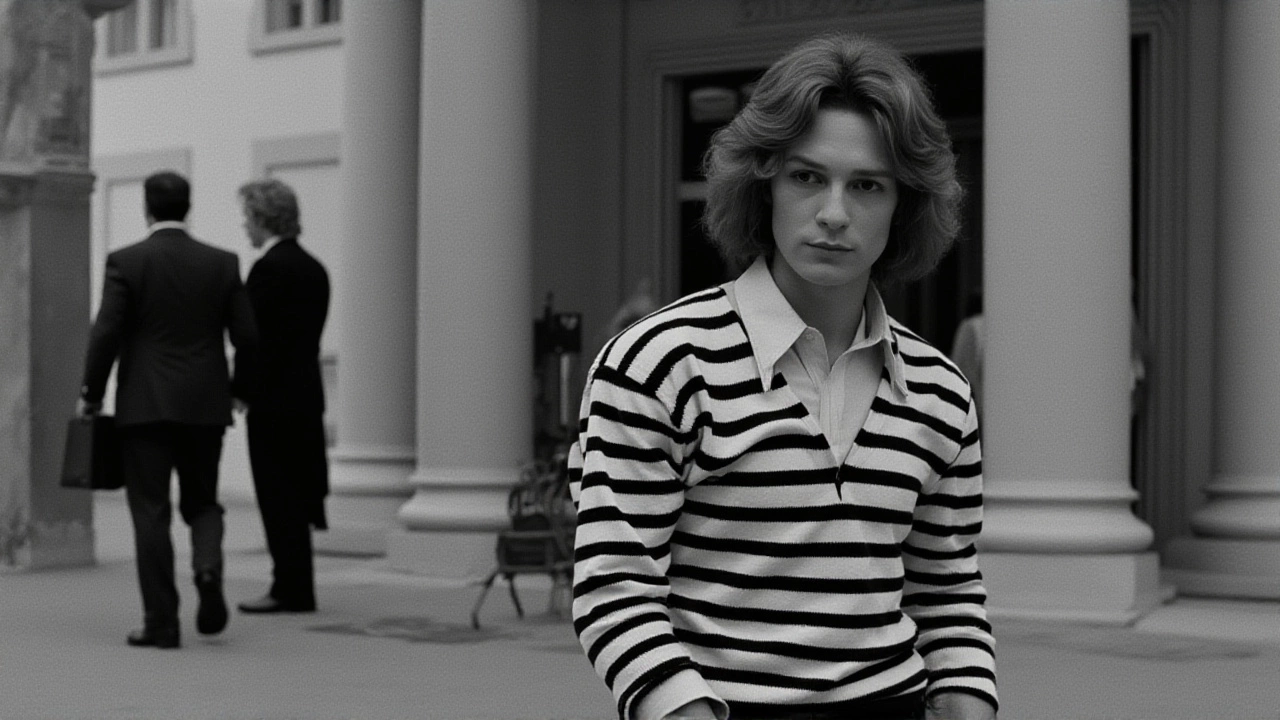The Most Beautiful Boy in the World: Björn Andrésen’s Trauma After Visconti’s ‘Death in Venice’

When Björn Andrésen stepped onto the red carpet in London in 1971, he was just a shy 15-year-old from Stockholm with eyes the color of Venetian canals. But when Luchino Visconti, the legendary Italian director, leaned into the microphone and declared him "the most beautiful boy in the world," the boy became an icon—forever frozen in time, and forever haunted by it. That moment, captured on film and amplified by global press, launched a career that would become a prison. Half a century later, the haunting documentary The Most Beautiful Boy in the World—directed by Swedish journalists Kristina Lindström and Kristian Petri—unearths what happened after the cameras stopped rolling.
The Boy Who Became a Symbol
Visconti had spent months searching the world for the perfect face to embody Tadzio, the ethereal adolescent in his adaptation of Thomas Mann’s Death in Venice. He found Andrésen in a Swedish schoolyard, not through an agent or audition, but by chance. The director saw something classical in him—something that looked like a marble statue brought to life. When the film premiered in London, audiences were transfixed. Andrésen didn’t speak much in the movie. He didn’t need to. His silence, his posture, his gaze—everything about him became a canvas for desire, fantasy, and longing. He was instantly fetishized. Newspapers called him a "living Botticelli." Japanese fans sent him letters by the thousands. An anime comic was made in his image. He became, as the Riga International Film Festival noted, one of the first Western teenage idols in Japan. But beauty, when it’s imposed, is a cage.The Fall From Grace
By the time Andrésen was 18, the world had moved on. His voice deepened. His body changed. The Apollonian perfection Visconti had worshiped began to fade. At a press conference at the Cannes Film Festival—years after the film’s release—Visconti reportedly turned away from him, cold and dismissive. "He no longer looked like Tadzio," one insider recalled. The message was clear: his value was tied to a look that had expired. Andrésen was abandoned by the man who made him famous, and by the industry that had built him up only to discard him. "He didn’t know how to be anything else," says Lindström in the documentary. "He was told he was beautiful. Then he was told he wasn’t anymore. And no one told him what to do next." The result? Years of depression, identity crises, and near-total withdrawal from public life. He took a few small roles, but none ever matched the scale of his early fame. He struggled with substance abuse. He lived quietly in Stockholm, avoiding interviews, avoiding the spotlight he never asked for.A Documentary as a Lifeline
Released in 2021, The Most Beautiful Boy in the World was not meant to be a retrospective. It was meant to be a reckoning. The film, distributed by Juno Films and Dogwoof, weaves together archival footage, intimate interviews with Andrésen, and rare clips of Visconti—some of the director’s last public appearances. The tone is not sensational. It’s quiet. Sad. Reverent. What emerges is a portrait of exploitation masked as admiration. Andrésen, now in his 60s, speaks for the first time about being photographed in the nude as a child, about being paraded in front of wealthy patrons, about how strangers would follow him in the street, whispering, "That’s him. The boy from Death in Venice." "I didn’t have a childhood," he says in the film. "I had a role. And then the role ended. And I was still there." The documentary received critical acclaim: a 73 Metascore, 6.8/10 on IMDb from over 2,200 users, and 13 festival nominations. It screened at The Quad Cinema in New York on September 24, 2021, and later at the Riga International Film Festival in October 2021. More than 6,000 users added it to their IMDb watchlists—a sign that audiences, especially younger ones, are beginning to understand the cost of early fame.
Why This Matters Now
In 2024, the conversation around child actors has shifted dramatically. The #MeToo movement, the rise of child advocacy groups, and high-profile lawsuits against studios have made it harder to ignore the systemic abuse in entertainment. Andrésen’s story isn’t unique. It’s just one of the earliest and most visually arresting examples. Compare him to the child stars of today—those who grow up on TikTok, Instagram, or reality TV. The tools have changed, but the pattern remains: a child’s image is commodified, their vulnerability monetized, and their humanity ignored once they outgrow the aesthetic. "We didn’t just admire him," says one film historian in the documentary. "We consumed him. And when we were done, we threw him away."What’s Next for Björn Andrésen?
Today, Andrésen lives in a modest apartment in Stockholm. He’s largely out of the public eye. But the documentary has given him a voice he never had. He’s spoken to a few journalists since its release—tentatively, cautiously. He says he’s not looking for fame anymore. He’s looking for peace. There are rumors he’s working on a memoir. No publisher has been confirmed. No release date set. But if he writes it, it won’t be about beauty. It’ll be about survival.Frequently Asked Questions
How did Luchino Visconti discover Björn Andrésen?
Visconti was searching across Europe for the perfect face to play Tadzio in his adaptation of Thomas Mann’s Death in Venice. He found Andrésen in 1970 at a school in Stockholm—not through a formal casting, but by chance. A local teacher showed him photos of students, and Andrésen’s image stood out. Visconti flew to Sweden, met him in person, and cast him immediately, drawn to his classical, almost sculptural beauty.
What impact did the film have on Andrésen’s mental health?
The sudden global fame and objectification at age 15 led to severe depression, identity loss, and substance abuse. Andrésen has described feeling like a "living statue"—valued only for his appearance. After Visconti rejected him as he aged, he felt abandoned by the industry and struggled for decades to define himself outside of Tadzio. The documentary reveals he still lives with trauma, though he’s begun to speak publicly for the first time.
Why is this documentary significant today?
It’s a chilling early example of how child stars are exploited under the guise of artistry. Today, with heightened awareness of child welfare in entertainment, Andrésen’s story serves as a warning: beauty is not a career, and a child’s image should never be commodified. The film has sparked renewed discussions about consent, aging, and the long-term psychological damage of early fame.
Where can you watch The Most Beautiful Boy in the World?
The documentary was released theatrically in the U.S. at The Quad Cinema in New York in September 2021 and screened internationally, including at the Riga International Film Festival. It became available on Amazon Prime Video and through the official site mostbeautifulboy.film. It remains accessible on-demand in many regions, though availability varies by country.
Did Björn Andrésen ever act again after Death in Venice?
He appeared in a handful of minor Swedish and European films in the 1970s and 80s, but none matched the scale of his debut. He largely withdrew from acting, citing discomfort with being judged solely on appearance. He briefly returned to the screen in the 2000s for small roles, but never sought mainstream success. His most significant work since then has been speaking out about his experiences.
What’s the legacy of Luchino Visconti’s portrayal of Tadzio?
Visconti’s Tadzio became one of cinema’s most iconic representations of idealized beauty—a symbol of unattainable grace. But the legacy is complicated. While the film is critically revered, the way Andrésen was treated has cast a long shadow. Today, many film scholars view the movie not just as an artistic triumph, but as a cautionary tale about the ethics of gaze, power, and exploitation in art.




